Colleton County, South Carolina Land For Sale (64 results)
Want to post your listings on AcreValue? View Listing Plans
AcreValue offers multiple types of land for sale in Colleton County, so if you’re looking for a new ranch, farm, recreational property, hunting ground, developmental property, or land investment you’ve come to the right place. Regardless of what your needs or objectives are for your land, we have a large inventory of available parcels that are updated regularly. Therefore, it’s very likely that we have the perfect parcel that meets all the search criteria & specifications that you’ve been searching for. Additionally, because our land for sale listings are always being updated due to the frequency of land being sold or new land listings being put on the market, make sure that you are checking back with AcreValue regularly for updates. When you find the perfect land parcel and you are ready to take the next steps you can easily connect directly with the listing agent to help you facilitate your land purchase. Browse AcreValue's South Carolina land for sale page to find more potential opportunities in South Carolina that fit your needs. We wish you the best of luck in finding your next ranch, farm, recreational property, hunting ground, developmental property, or land investment.
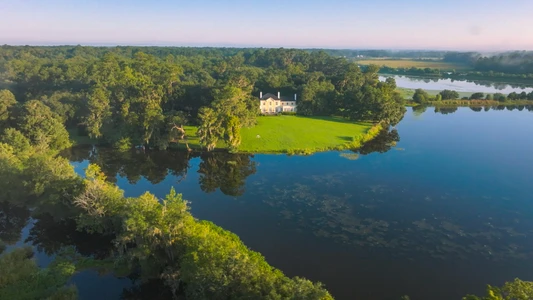

08/22/2025
$22,500,000
1656 ac.
ACTIVE
Colleton County - Poco Sabo Lane, Green Pond, SC
Poco Sabo is a classic Lowcountry sporting plantation located in the heart of the renowned ACE Basin, one of the nations most successful conservation initiatives with more than 320,000 permanently protected acres surrounding the Ashepoo, Combahee and Edisto rivers.
Located 30 miles up the Ashepoo River from beautiful Saint Helena Sound and less than an hour from downtown Charleston, South Carolina Poco Sabo is part of a unique and distinguished community centered on sporting pursuits and anchored by a deep-rooted conservation ethic. Neighboring protected properties include Lavington Plantation, White Hall, Dawn Plantation, Bonnie Doone, Airy Hall, and the 8,048-acre publicly accessible Donnelly Wildlife Management Area. The conservation easement on Poco Sabo is held by the Lowcountry Land Trust. It provides for additional dwellings and reconfiguration, while protecting the overall integrity of the land and allowing uses typical of a Lowcountry plantation.
Perfectly sized at 1,656 acres, Poco Sabo boasts nearly three-fourths of a mile of frontage on the picturesque Ashepoo River and one and a half miles of frontage on Beef Creek. A network of more than 200 acres of tidal and inland impoundments is managed for waterfowl and hosts legions of migrating birds during the hunting season. Poco Sabos mature mixed hardwood and pine forests also harbor abundant deer, turkey and other wildlife.
Like many desirable Lowcountry plantation homes, the main house at Poco Sabo was constructed on a bluff, set back from any roads and carefully situated to take advantage of the prevailing breeze. The driveway leading to the residence passes through a grove of ancient live oak trees and is flanked by fenced horse pasture and a pecan orchard. The home is ideally positioned for sunrise views over an old rice impoundment, the vista extending out toward an unbroken ribbon of wetland, forest and sky. On the terrace, one can sit and enjoy the gentle westerly winds; or just steps away is the adjacent azalea garden, whose riotous bloom provides a burst of color every March and April.
Built in 1934 during the ownership of Silas Howland, the main house at Poco Sabo was designed by the Charleston-based architectural firm of Simons & Lapham, known for their restoration of historic homes in the area including Charlestons Rainbow Row and Dock Street Theater. Although Poco Sabos 18th century dwellings did not survive past the Civil War, it is believed that the current residence was inspired in some way by the original. After the home was built, future owners continued to use Simons & Lapham for enhancements to the house and ancillary buildings. Though originally intended as a humble hunting lodge, the house today stands as a grand structure at 6,227 square feet with four en suite bedrooms and two half baths. It is fortified with a standing seam metal roof and beaded shiplap cypress siding. Significant additions include an east and west wing, two sunrooms extending toward the house pond, and a handsome portico over the entrance.
Perhaps most importantly, Poco Sabo sets the stage for quintessential Lowcountry entertaining and hospitality. Beginning in the main house with its authentic cypress-paneled billiards room, expansive views from large windows and French doors, gracious formal dining room, intimate library, modern office and more, guests immediately feel a sense of history, comfort and home. Conveniently, there is a bedroom downstairs on the east wing and three en suite bedrooms upstairs. The west wing functions as an informal entrance, starting with the large mud room characterized by green-painted beadboard and red brick flooring. It is here that firearms are secured and every type of recreational equipment is stored. The mud room leads into a series of refreshment and utility rooms, then into the main kitchen and eventually into the main living area. Two delightful enhancements to the amenities at Poco Sabo were recently established: a brick fitness studio and a Hartley English greenhouse.
A lovely three-bedroom guest house and a two-bedroom cottage offer separate, stand-alone quarters for visitors. In addition, there is a managers house and a newly built one-bedroom cottage, overlooking a tidal pond on the Ashepoo River, which also serves as a private art studio.
The outbuildings at Poco Sabo provide ample space and function for all the necessary recreational and land management activities associated with a plantation. There is a multipurpose barn with six horse stalls, a tack room and a hay loft. The barn also has two walk-in coolers, a cleaning station with sink, several drive-in doors, a large workshop area, a fully equipped managers office, and an open concrete pad. Additionally, there is a large equipment lean-to, and a utility building with eight run-in dog kennels attached.
The name Poco Sabo is a fusion of two distinct cultures. In Spanish, it translates as little known. To the Native Americans who dwelled there, Poco Sabo means lost in the mists which rise over the river (p 5, Moore). Landgrave Edmund Bellinger, who coined the distinctive name, received the original land grant in 1702, and the property remained in the Bellinger family for almost 150 years. The tidal management infrastructure seen today at Poco Sabo harkens back to 18th century commercial rice cultivation:
Poco Sabo Plantations physical and cultural geography-indeed its raison detreare-bound up with the commercial cultivation of rice. Although rice is no longer grown there, the expansive system of dikes, trunks, causeways and impounds defines its character as much today as it did when the plantation was at the center of antebellum South Carolinas rice kingdom. Present-day stewardship of Poco Sabo and the ACE Basin includes the preservation of the heritage of rice culture
-Moore, A. (2005). Poco Sabo Plantation: A Place in Time.
Aside from the rice infrastructure, known remains from this historic period include a few preserved artifacts, tabby ruins, and a Landgrave cemetery garden. Prior to the Civil War, the Bellingers sold the property to a series of short-term owners who continued to grow rice up until the early 1900s.
Eventually, the property was acquired in 1910 by Sidney Boynton, who was the first known owner to value Poco Sabo primarily for its recreational attributes. Boynton was associated with the plantations next owner, Silas Howland, a New York attorney and avid sportsman, who built the house that stands today.
Soon after purchasing Poco Sabo, Howland died, and in 1939, the property was purchased by Samual Flagg, who made significant enhancements to the house. Several more owners followed, including Col. M. Robert Guggenheim (grandson of Meyer Guggenheim), Allen Spaulding (the first to use Poco Sabo as a primary residence), and Mr. and Mrs. H. Anthony Ittleson of New York. During their ownership between 1994 and the last sale in 2022, the Ittlesons added several ancillary buildings and provided decades of wise stewardship for this legacy property.
Poco Sabo has enjoyed decades of dedicated waterfowl and game management. Today, the plantation offers 140 acres of tidal rice fields and 70 acres of inland impoundments (all expertly maintained), with permits and potential to impound an additional 21 acres inland. Approximately 50 acres of tidal impoundments tucked away along Beef Creek are currently fenced and planted in corn. Greentree reservoirs may also be utilized as natural habitat for wood duck. The most popular species of waterfowl found at Poco Sabo are green-winged teal, wood duck, wigeon and gadwall.
The forest at Poco Sabo comprises old growth hardwoods with a mixture of loblolly, longleaf and shortleaf pine. Thinning could enhance the natural habitat for wildlife while also monetizing the propertys resources. Quality game management has been practiced on the property since its last sale and there are multiple food plots within. A large section of timber located across Bennetts Point Road has sandy soils and high elevation sufficient for pre-season quail release with potential to manage for wild coveys. Twelve acres of fields with faux power lines have been planted for the 2025-2026 dove season.
Lying in a freshwater zone of the Ashepoo River and containing several ponds, Poco Sabo enjoys exceptional access to bass, bream and catfish. As for boating, there is currently a landing on Beef Creek which can be used by smaller vessels. There is also the ability to construct a deepwater dock directly on the Ashepoo River.
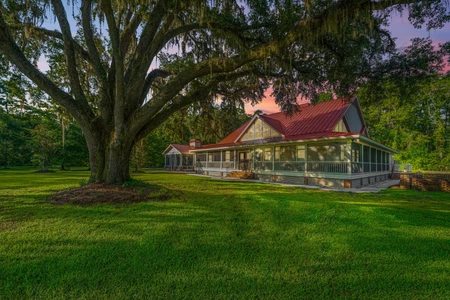

08/08/2025
$4,750,000
217 ac.
ACTIVE
Colleton County - 676 Public Lndg Lane, Yemassee, SC
River Oaks Plantation Features Two miles of frontage on the historic Combahee River. River Oaks is a private gated 217 acre paradise, the perfect location for the outdoor lover and sportsman! This unique deep water property has a Grand Main house with a great hall perfect for entertaining. The Carolina room has a beautiful view of a covered dock with a Gated canal leading to the Combahee River. The guest house is perfect for family and friends! The many features of River Oaks include... A large screened cook shed overlooking the gated canal, a road system throughout the property, a second dock overlooking the Combahee and exterior gate, two enclosed deer condominiums perfect for hunting or wildlife observation, a 2400 sq. ft. equipment shed, a rifle range, Click MORE for details. River Oaks is located in the ACE BASIN which features the Ashepoo, Combahee and Edisto Rivers and is one of the largest undeveloped estuaries along the Atlantic Coast. Premium opportunities for Turkey and deer hunters, and great fishing from either of the two docks on a gated canal leading to the Combahee. The canal and 5 ponds on the
property serves as a premier habitat for aquatic birds year-round, and as a resting place for migratory ducks . Although Public Landing has a boat launching ramp, the present owner has been launching his Jon boat from the graveled road leading to his private boat house and nearby dock. A second dock in River Oaks is located on the canal down a private RTV trail which terminates into a peninsula ideal for a sunset cocktail, or wine and cheese appetizer at sunset. The Combahee and exterior River gate are visible from the second dock. Two enclosed elevated
deer condominiums are located amid shooting lanes in the back of the property. Portable heaters have enabled the present owner to hunt regardless how cold the weather may be. There is a well-developed road system throughout the property to enable hunting and sightseeing. The area of River Oaks adjacent to the Combahee is a mix of wetlands, hardwood ,wetland vegetation, swamp, cypress trees, and planted pine. A 135 Yard rifle and pistol range is on the property with a heavily built commercial bullet bunker to eliminate the potential for lead contamination and to provide a safer place to zero rifles and practice shooting. As you enter the property through the electric wrought iron gate, to the right is a 2400 sq. ft. equipment shed with two electric overhead doors and adjacent to it
a FEMA certified Safe-Shed storm shelter, which is a 24,000 pound concrete and steel building intended to provide safety in storms or severe tornadoes. As throughout the property, everything
has been carefully thought out. There is a Generac backup generator that provides power to the storm shelter, which is air conditioned and heated, as well as the equipment shed and water well. The well provides water for both cleaning at the shed and irrigation. The driveway past the gate and
fencing leads to the inner property where the main house, firepit, carriage house (5 car garage), and guest house are situated. All residential buildings have been continuously upgraded with additions having been added to the main house in 2014.
The roof on the guest house was recently replaced in December 2024, and the roof on the main house was replaced in approximately 2020. Both roofs were installed by Professional Roofing out of Bluffton, and are under warranty. There's a graveled floor firepit area complete with picnic tables and Adirondack Chairs. A fenced garden area with raised boxes is located near the
carriage house and irrigation from the nearby well. The house Main was designed as one of the last projects of Doug Corken, a well-known Lowcountry architect. A wide screened porch with burnt poplar screen doors keeps the porch nearly bug free while you sip your mint julep under the cool breeze of the numerous overhead paddle fans. The cypress ceilings on the porch ceiling add to the aesthetics. The exterior of the house has six large trapezoidal windows. One window for each of the vaulted ceilings in the four bedrooms, and two windows at each end of the main living room with its massive fireplace. The Carolina room in the main house faces the canal. The full length of the Carolina room is covered with windows for unobstructed view of wildlife and the canal. It was completed in approximately 2015 at the time the screened cook shed is was built . The screened cook shed is great for entertaining and is approximately 1,000 Sq Ft. under roof. The deck behind the guest house's main bedroom was replaced in 2025, and wooden hand railing on the deck and steps were replaced with durable black metal. A chimney lies just outside of the guest house which would make a great spot for an outdoor fireplace. Approximately 1 hour to Charleston or Savannah, 30 minutes to Beaufort. 45 minutes to Hilton Head.
Copyright © 2025 CHS Regional MLS. All rights reserved. All information provided by the listing agent/broker is deemed reliable but is not guaranteed and should be independently verified.
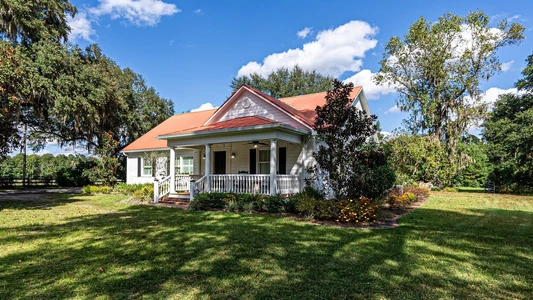

11/11/2025
$12,000,000
900 ac.
ACTIVE
Colleton County - Tuten Lane, Jacksonboro, SC
LOCATION
Welcome to Bluefield Plantation, a +/- 900 acres of land for sale in the heart of South Carolina's Lowcountry. The property offers a rare blend of rich heritage, natural beauty, and investment potential. Located within 45 minutes of Charleston and Beaufort, and minutes to Dorchester County, this estate is truly in the path of progress. The historic family plantation has been meticulously managed and preserved through the years, making it a thriving timberland and agricultural haven.
TIMBER DIVERSITY
The land boasts an array of well-maintained mixed pine plantations, natural pine and hardwoods. Abundant wildlife, including turkey and deer, make this property a hunter's paradise. The farm's arable land, currently dedicated to hay fields and row crops, underscores its agricultural viability.
AMENITIES & RECREATION
One of the standout features of this estate is a world-class sporting clay course. The automated course has become a recreational staple in the area, attracting enthusiasts from near and far. In addition, a steel building with office space as well as a reception area and communal room with a kitchen accompany the course.
RESIDENCE & HISTORICAL VALUE
A spacious residence provides comfortable living quarters with approximately 3,000 square feet of rural charm. History scholars will appreciate the significance and cultural value of the adjoining burial site of Isaac Hayne. There are no existing easements or encumbrances on this property. For the astute land investor seeking a unique blend of conservation, recreation, and development potential, this property presents an unparalleled opportunity.
Contact us today to embrace the legacy of the Lowcountry and invest in a future of limitless possibilities.
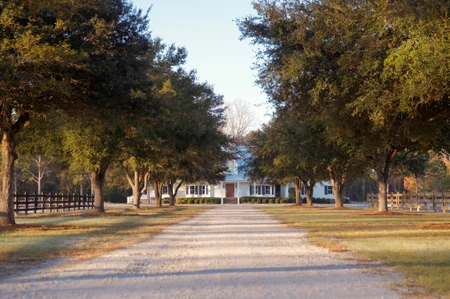

12/09/2024
$2,200,000
48.2 ac.
ACTIVE
Colleton County - 4147 Moselle Road, Islandton, SC
Completely Overhauled 48.2 +/- Acre Manicured Lowcountry Estate With Large Horse Paddocks And Freshly Renovated Custom Home!
Moselle is located in Colleton County, South Carolina and features 48.2 +/- acre manicured acres. The home and grounds have seen a complete overhaul, are exceptionally maintained, and it is in walk-in-ready condition.
You're welcomed into the property through a grand 1/4 mile long live oak-lined driveway, complete with a new custom iron gate entrance for added privacy and curb appeal. At the end of the main driveway lies the 2 story, Lowcountry plantation style estate. This meticulously overhauled custom home has seen a recent expansion and now offers 4 spacious bedrooms and 5 luxurious bathrooms. Designed with an open floor plan, there is a seamless flow from the grand entrance and great room to the gourmet kitchen complete with high-end appliances. Vaulted ceilings and new fixtures throughout lend a sense of drama and elegance to every space. The home boasts a fabulous new master wing for ultimate privacy, along with a beautifully appointed spa-like bathroom.
Moselle is ideal for equestrian enthusiasts, and features 10 +/- acres of fenced horse pasture. The land drains well and with a 48 + acre footprint there is plenty of room for riding trails. Two large barns are located on site and can be accessed by a separate service entry point off of Moselle Rd. The expansive 100 x 35 tractor shed features both open and lockable storage space, and along with a 130 x 45 airplane hangar that doubles as a barn, you'll have plenty of room to store all of your essential equipment and gear.
This estate is an exceptional blend of luxury, privacy, and functionality, ideal for those seeking a country lifestyle with space to entertain, or simply enjoy the stunning Lowcountry landscape.
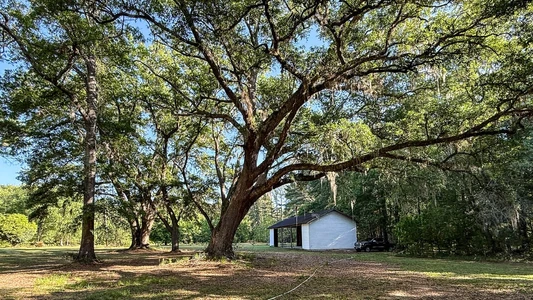

11/11/2025
$602,000
70 ac.
ACTIVE
Colleton County - Norris Drive, Walterboro, SC
Discover Oakbreeze Farm, a stunning +/- 70-acre property located in the heart of Colleton County, SC. This land offers endless possibilities, whether you're seeking a private retreat, a hunting property, or a versatile agricultural investment. Conveniently positioned just 15 minutes from Walterboro, an hour from Charleston, and only 10 minutes from I-95, the property combines rural tranquility with easy access to nearby cities and major travel routes.
Boasting approximately 2,000 feet of road frontage on Norris Drive, Oakbreeze Farm is designed for convenience and accessibility. The internal road system provides easy navigation throughout the property, while existing infrastructure - including two septic systems, power, two wells, and a shed - adds to the functionality and development potential. The land is home to thriving mature loblolly pines and areas of natural hardwood.
For outdoor enthusiasts, Oakbreeze Farm is a fantastic opportunity. A scenic fish pond and abundant wildlife make it ideal for recreational activities, with exceptional deer and turkey hunting opportunities. Whether you're looking to escape the hustle of city life or invest in a property with untapped potential, Oakbreeze Farm delivers unmatched opportunity and charm.
Key Features
This remarkable property spans approximately 70 acres, offering a range of features to suit various needs.
With about 2,000 feet of road frontage along Norris Drive, access to the property is both convenient and practical.
An internal road system ensures easy navigation throughout the land, making it ideal for exploration or future development.
The property is equipped with essential infrastructure, including two septic systems, power, and two wells, making it ready for immediate use.
A shed is also situated on the land, providing additional storage or workspace.
Oakbreeze Farm boasts a diverse and thriving landscape.
Mature loblolly pine plantation, alongside areas of natural hardwood, create opportunities for timber-related ventures or simply enjoying nature.
A scenic fish pond further enhances the property, offering a peaceful spot for relaxation or recreation.
For outdoor enthusiasts and hunters, this property is an excellent choice. With abundant wildlife, including deer and turkey, it provides outstanding opportunities for hunting. Whether you're looking to enjoy the great outdoors or develop the land to suit your vision, Oakbreeze Farm has everything you need.
Prime Location with Exceptional Accessibility
Oakbreeze Farm perfectly balances rural charm with modern convenience. Situated just 15 minutes from the quaint town of Walterboro, SC, and only an hour from the bustling city of Charleston, SC, this property provides the best of both worlds. Whether you're looking for a peaceful retreat or quick access to urban amenities, this location delivers. The property's proximity to I-95, just 10 minutes away, ensures easy travel for both short trips and longer commutes. The accessibility makes it a practical choice for those who value convenience intertwined with the tranquility of the countryside. Oakbreeze Farm's location is ideal for anyone seeking a lifestyle that blends the quiet pleasures of rural living with the benefits of being within reach of key destinations.
Agricultural Opportunities
Oakbreeze Farm offers incredible potential for those interested in agricultural ventures. The property features mature loblolly pine plantations, providing opportunities for timber harvesting or long-term investment. Additionally, the natural hardwood areas add diversity to the landscape and further enhance the value of the land for forestry or conservation efforts.With open spaces and fertile ground, the property is well-suited for farming or other agricultural uses. Whether you're considering row crops, orchards, or grazing livestock, the land's versatility makes it an excellent foundation for multiple agricultural projects. The existing infrastructure, including two septic systems, power and two wells, ensures the property is equipped to support agricultural operations with ease. For buyers seeking to expand or start a farming enterprise, the combination of natural resources and infrastructure creates a practical and valuable opportunity. Oakbreeze Farm is not only a beautiful property but also a functional and adaptable space for agricultural growth.
Outdoor Adventures and Hunting
With thriving populations of deer and turkey, Oakbreeze Farm is a haven for hunters. The diverse landscape, featuring mature loblolly pines and natural hardwoods, creates an ideal habitat for wildlife and ensures memorable outings for seasoned hunters and beginners alike. Adding to the property's charm is a scenic fish pond, perfect for those who enjoy relaxing by the water or casting a line. Whether it's a quiet afternoon spent fishing or simply taking in the serene surroundings, the pond is a peaceful retreat within the property. The combination of water features, open spaces, and wooded areas makes Oakbreeze Farm an excellent location for hiking, nature watching, or even setting up camp for a weekend getaway.
This land is more than just a property - it's an invitation to experience the outdoors in all its beauty. With opportunities to hunt, fish, explore, and relax, Oakbreeze Farm offers an unmatched setting for anyone looking to embrace a lifestyle centered around outdoor recreation and natural tranquility.
Don't wait! Call or email us today to schedule a showing with one of our agents.
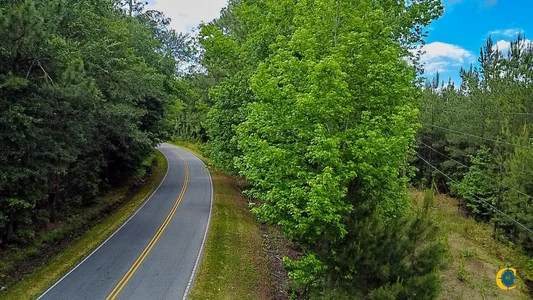

11/11/2025
$340,000
68 ac.
ACTIVE
Colleton County - Peurifoy Road, Walterboro, SC
Property Overview
The Peurifoy Road Tract presents the opportunity to acquire +/- 68 acres of Lowcountry land in Colleton County, South Carolina. Priced at $340,000 ($5,000 per acre), this property combines natural beauty with strategic location, offering an ideal setting for hunting, recreation, or future development.
Location
Located just outside Walterboro, SC, the tract provides exceptional accessibility while maintaining rural character. The property is 5 minutes from downtown Walterboro and approximately one hour from Charleston. The prime Lowcountry location offers the best of both worldspeaceful seclusion with easy access to employment centers, shopping, dining, and cultural amenities.
Access
The property features road frontage on Peurifoy Road, providing straightforward entry and the potential for development. This existing road frontage eliminates common access challenges and creates immediate value for future use or subdivision potential.
Improvements
The tract is currently unimproved, offering a blank canvas for buyers to develop according to their specific vision and needs.
Wildlife and Recreation
Abundant habitat and wildlife make the Peurifoy Road Tract an ideal setting for hunting enthusiasts. The property's natural features support healthy populations of deer, turkey, and other game species. The serene and inviting landscape creates excellent opportunities for outdoor recreation, wildlife observation, and establishing food plots or hunting infrastructure.
Summary
The Peurifoy Road Tract represents a unique opportunity in South Carolina's Lowcountry. With +/- 68 acres of natural beauty, road frontage, abundant wildlife, and proximity to both Walterboro and Charleston, this property appeals to hunters, recreational land buyers, and those seeking a peaceful country retreat. The combination of rural tranquility and urban accessibility makes this tract a truly desirable option in Colleton County.
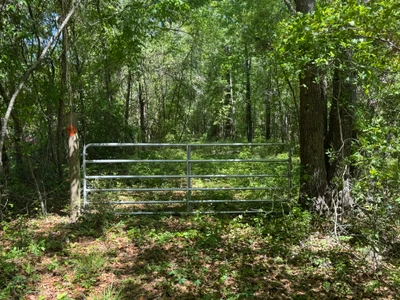

04/29/2025
$62,645
17 ac.
ACTIVE
Colleton County - Walterboro, SC
Secluded 17-Acre Retreat with Water Features & Wildlife Habitat Just 30 Miles from Charleston and a 5-minute drive to Walterboro.
Tucked away at the end of a quiet, dead-end road, this exceptional 16-acre property offers rare seclusion just 30 miles from Charleston. Surrounded by nature and free from through-traffic, it's a true sanctuary for those seeking privacy, outdoor recreation, and ecological richness.
At the heart of the property flows the Shereau Branch, an ecologically significant waterway that supports a diverse mix of native wildlife. This natural stream enhances the landscape with seasonal waterfowl habitat and lush wetland pockets, attracting birds, amphibians, and an array of aquatic life. The surrounding terrain is gently rolling and rich in biodiversity.
The timber component features a healthy mix of natural pine and mature hardwoods, offering both aesthetic beauty and long-term value. Whitetail deer are frequently seen on the property, making it ideal for wildlife observation or hunting enthusiasts. The variety of forest cover and the presence of year-round water create a thriving ecosystem.
Whether you're looking to build a quiet country home, create a conservation retreat, or invest in a private recreational property, this land offers a rare blend of privacy, habitat diversity, and proximity to the Lowcountry's cultural hub.
Note: This offering is for a 16-acre division of the property that will require being surveyed off the "mother" tract. Please contact the agent for details and specifics.
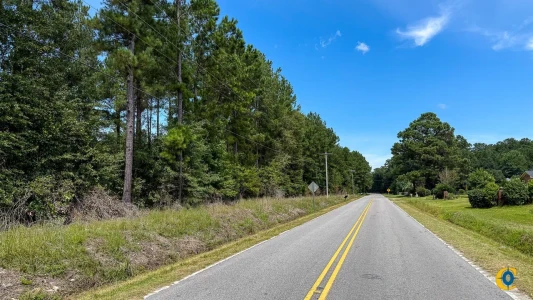

11/11/2025
$117,000
8 ac.
ACTIVE
Colleton County - Peurifoy Rd, Walterboro, SC
Peurifoy Road Estate in Colleton County, SC, offers the perfect blend of rural tranquility and urban accessibility. Located just minutes outside of downtown Walterboro, this +/- 8-acre parcel provides easy access to shopping, dining, and services while maintaining the privacy and space of country living. The location places you just 45 minutes from historic Charleston, offering the best of both worldspeaceful rural living with convenient access to one of the South's most vibrant cities.
PROPERTY HIGHLIGHTS
600 feet of paved road frontage on Peurifoy Road
All utilities readily available power, high-speed internet, and water on-site
Gentle topography ideal for custom home construction
Multiple building sites throughout the tract
MATURE TIMBER
The property features mature Loblolly Pine plantation, representing both natural beauty and long-term timber investment potential. These professionally managed pines provide excellent privacy while offering future harvest opportunities. The mature forest creates an ideal backdrop for your custom estate home while maintaining the property's natural character and ecological value.
WILDLIFE & OUTDOOR RECREATION
Peurifoy Road Estate supports a thriving wildlife population, including deer and turkey habitats for hunting and wildlife viewing opportunities. The mature pine forest and natural clearings create wildlife corridors and feeding areas, making this property perfect for the outdoor enthusiast.
UTILITIES & INFRASTRUCTURE READY
One of the most significant advantages of Peurifoy Road Estate is the immediate availability of essential utilities. With power, high-speed internet, and water already accessible on-site, development costs are significantly reduced compared to remote rural properties. This infrastructure advantage, combined with the substantial paved road frontage, makes this an ideal location for building your dream home without the typical challenges and expenses associated with rural development.
FLEXIBLE BUILDING OPTIONS
The +/- 8-acre size provides ample space for a variety of development scenarios. Whether you envision a single custom estate home with extensive landscaping and outbuildings, or prefer to maintain larger natural areas around a more modest homesite, this property offers the flexibility to create your perfect living environment. Multiple potential building sites allow you to choose the ideal location based on views, privacy preferences, and landscape features.
INVESTMENT OPPORTUNITY
Peurifoy Road Estate represents an exceptional opportunity in one of South Carolina's most desirable counties. Colleton County's proximity to Charleston, combined with its lower cost of living and rural character, continues to attract new residents seeking quality of life improvements. The combination of immediate utility availability, substantial road frontage, mature timber, and prime location creates significant value for both personal use and investment potential.
Ideal uses include:
Custom estate home development
Recreational retreat
Timber investment and management
Future subdivision potential
Privacy-focused luxury living
LOCATION
The Walterboro area offers small-town charm with modern conveniences, featuring excellent healthcare facilities and recreational opportunities. Historic downtown Walterboro provides shopping, dining, and cultural attractions, while the short drive to Charleston opens up world-class amenities, employment opportunities, and entertainment options. This location provides the perfect balance for those seeking peaceful country living without sacrificing access to urban conveniences.
For private showings and additional information, contact us today.


07/03/2024
$245,000
2 ac.
ACTIVE
Colleton County - 15298 Bennetts Point Road, Green Pond, SC
This offering is for two parcels side by side totalling 2 +\- acres with a mobile home and sheds in the peaceful waterfront community of Bennetts Point in Colleton County, SC overlooking the Ashepoo and South Edisto Rivers. Nestled along the coast between the Beaufort and Charleston areas, Bennetts Point is a short distance from popular places like Edisto Island, Bear Island WMA, Donnelley WMA, and Ashepoo / Hwy 17. Bennetts Point is very popular for its fresh seafood, and theres a fresh seafood store within a short golf cart ride from this property. Theres also a public boat landing there as well. The atmosphere in this area is very easy going, and a great place to come and relax, enjoy the saltwater life, and catch some fish, shrimp or crabs! The lots being sold here are both very high/dry and level. There is already a well, power, two septic tanks in place, a hookup for a second home or mobile home if desired, two storage sheds and covered areas, and a gorgeous ancient live oak in the center of the property. The mobile home currently on site features 2 bedrooms, 2 bathrooms, living room and kitchen. It has been used as a family getaway and a place to come relax and fish and enjoy the coast. There are no restrictions here, you can build or do as you please. The sale includes both tax parcels and lots, but one could easily later sell one lot separately, as its already divided at the Colleton county office, showing 1.1 acres + 0.9 acres. Showings are by appointment only. Contact the listing broker for more information or to schedule a time to see it!
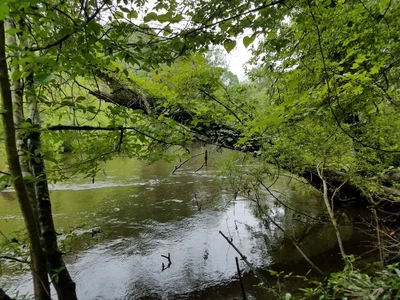

10/27/2025
$374,990
161.34 ac.
ACTIVE
Colleton County - Pierce Rd, Lot#WP001, Ridgeville, SC
Located in Colleton County, South Carolina, this 161.34 acre tract offers a rare opportunity to own extensive river frontage along the Edisto River. The property includes approximately 4,400 feet of direct river access and features a mix of mature hardwoods, cypress bottoms, and natural wetland habitat. This combination of terrain supports a rich ecosystem and provides excellent opportunities for wildlife observation, recreation, and hunting.Access is provided through a gated entrance at the end of Hidden Cove Lane, leading to an internal road system that extends into the property. An old logging road offers passage to approximately 14 acres of higher, dry ground that can be navigated by utility vehicle or foot. While the property also fronts Pierce Road, that frontage lies within a wetland area and does not provide viable vehicular access.The landscape is characterized by mature bottomland hardwood stands dominated by cypress and tupelo trees interspersed with mixed hardwoods and pine on higher ground. These features contribute to a diverse wildlife habitat. Deer, turkey, and waterfowl are frequently observed throughout the tract, making it well-suited for seasonal recreation and hunting. The combination of river frontage and wetland cover also attracts migratory waterfowl, particularly along the backwaters and oxbows of the Edisto River.The property's location offers a balance of seclusion and accessibility. It lies near several public river landings, including Norman Landing, Prices Landing, and Good Hope Landing, providing convenient options for launching boats and canoes or accessing nearby recreation areas. While the property is rural in character, it remains within reasonable driving distance of larger towns and cities. The site is approximately 17 miles from Walterboro, 21 miles from Summerville, 40 miles from Charleston, 55 miles from Beaufort, and roughly 102 miles from Columbia.This tract is ideal for those seeking a private natural retreat, recreational holding, or long-term land investment with ecological and habitat value. The Edisto River corridor is known for its scenic quality and environmental importance, and tracts of this size with river frontage are increasingly difficult to find.The property is sold as is and is shown by appointment only.
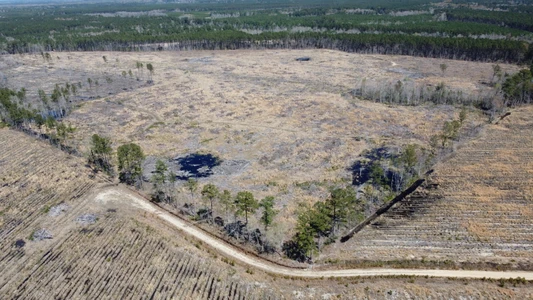

04/15/2025
$616,250
84 ac.
ACTIVE
Colleton County - Cottageville, SC
Nestled in the heart of Colleton County, just 30 miles from the vibrant city of Charleston, this 85-acre property offers an incredible opportunity to create your own rural retreat. The land has recently had its timber harvested, leaving an open canvas for reforestation or to design your own dream getaway. With an ample internal road system, accessing and exploring the property is a breeze, making it an ideal place for hunting, recreation, or peaceful living.
Located at the end of a quiet, dead-end road, this property provides a serene and private setting, perfect for those looking to escape the hustle and bustle of city life. Wildlife is abundant here, with whitetail deer and turkey. The land is also potentially suited for the creation of an upland waterfowl impoundment, providing an ideal habitat for waterfowl hunting. Whether you're looking to establish a hunting camp, a family retreat, or a weekend getaway, this versatile piece of land offers endless possibilities.
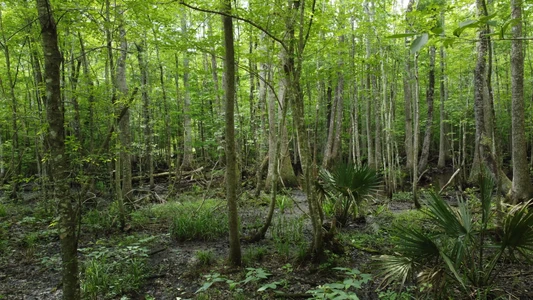

06/10/2024
$473,750
250 ac.
ACTIVE
Colleton County - Sniders Crossroads, SC
The Church Tract is conveniently located off of HWY 21 in Colleton County. This tract features approximately 5 acres of row crop, several acres of natural regeneration, and the remainder in a stand of natural hardwood along the headwaters of the Salkehatchie River.
This property offers the opportunity for fishing as the headwaters of the Little Salkehatchie meander through its western portion. In addition, the property provides excellent habitat for whitetail deer, turkey, and waterfowl. The 5 acre field offers an opportunity for a dove field for those inclined to wing shooting.
The bottomland habitat on this tract will also attract various types of wading birds, reptiles, and other small mammals. Whether traversing by kayak or exploring the hardwood bottom on foot, this tract is a very private setting for viewing the wildlife and flora of the Lowcountry.
This tract may be eligible for the WRE program. (It has an easement through NRCS. Contact the agent for more details.)
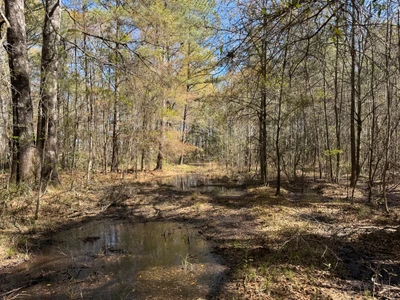

04/15/2025
$251,550
45 ac.
ACTIVE
Colleton County - Cottageville, SC
This 45-acre property, located just 30 miles from Charleston in the scenic Colleton County, offers a rare opportunity to own a beautiful and private piece of land. Tucked at the end of a quiet, dead-end road, it ensures seclusion and tranquility, making it an ideal retreat or hunting property. The land boasts a variety of water features, including a small pond and a duck swamp, perfect for waterfowl enthusiasts and nature lovers alike.
The property's diverse timber components include both planted pines and natural pine and hardwood stands, providing excellent opportunities for timber management, wildlife habitat, and aesthetic appeal. An extensive internal road system ensures easy access throughout the property, allowing for convenient exploration and enjoyment of the land.
Home to abundant wildlife, this property offers prime hunting grounds with whitetail deer, turkey, and ducks frequently seen throughout the area. Whether you're looking to develop your own recreational paradise or simply enjoy the peaceful surroundings, this land offers it alla rare blend of natural beauty, wildlife, and privacy, all within easy reach of Charleston.

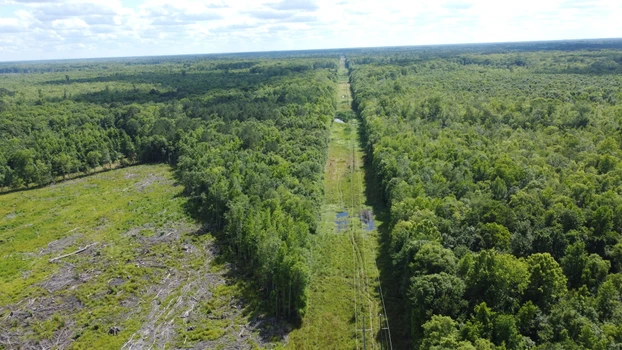
06/10/2024
$635,775
244 ac.
ACTIVE
Colleton County - Sniders Crossroads, SC
The Franklin tract is located on HWY 21 in Colleton Co. 55 miles from Charleston and Savannah and 75 miles from Columbia.
This property consists of 25 acres of open land/row crop and 20 acres of natural regeneration, with the balance in hardwood along the Little Salkehatchie River.
The row crop portion can provide the opportunity to establish a dove field for the wing shooting enthusiast.
The diversity of this property provides good habitat for whitetail deer, wild turkey, and waterfowl. The area along the Little Salkehatchie provides ample mast-producing trees to help support various types of wildlife.
The Salkehatchie also provides the opportunity for freshwater fishing, which is typically renowned for redbreast fishing.
An old logging road provides access to the swamp, adding value.
This tract may be eligible for the WRE program (Contact agent for details).
This configuration will need to be surveyed (Contact agent for details).


04/18/2025
$165,000
16.5 ac.
ACTIVE
Colleton County - Moselle Road, Islandton, SC
This 16.5 +\- acres features a nice combination of fields and planted pines along with a perimeter road system near Islandton in western Colleton County, SC. The tillable fields could make for a nice place to build or to plant. This tract also provides the opportunity to hunt, farm, ride, and enjoy the country lifestyle in a quiet rural area. It has a nice system of roads, trails and ditches already in place. The planted loblolly pines are steadily growing and provide good cover for wildlife and future timber. There are no special restrictions. This land is a convenient ride to a lot of popular areas including the towns and cities of Walterboro, Charleston, and Beaufort. There is a permit for a conventional septic system in hand. Please contact the listing broker for more information or to schedule a private showing. Stan Swofford, True South Properties - (803) 942-2394 .
Tax Map Number / Parcel ID : 140-00-00-027
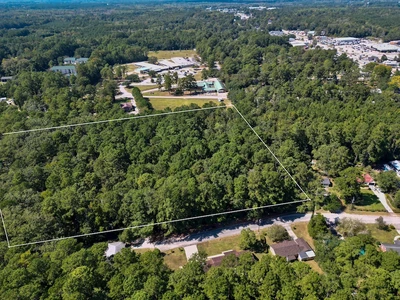

09/27/2025
$147,200
6.4 ac.
ACTIVE
Colleton County - TBD Sharon Dr, Lot#WP001, Walterboro, SC
This 6.4-acre tract is located within the municipal area of Walterboro in Colleton County, South Carolina. The parcel is raw land with no buildings or known past structures. It features mature trees, level topography, and is well serviced with paved road access. Municipal water and sewer lines are available at the site. The property is situated approximately one block off Bells Highway (a local thoroughfare in Walterboro), and roughly one mile from Interstate 95, offering good access to regional traffic routes. The combination of central location and available utilities makes the land viable for multiple uses. A potential buyer could consider building one or more homes, subdividing into smaller residential lots, or using it for business or commercial purposes consistent with local zoning. Walterboro is the county seat of Colleton County in the South Carolina Lowcountry. The city is approximately 48 miles west of Charleston, offering access to urban amenities while retaining a small-town atmosphere. Zoning and use will depend on local ordinances. Prospective buyers should verify permitted uses with the city of Walterboro and Colleton County. Potential utilities access, including connection costs for water, sewer, electric, and road frontage, should also be confirmed.
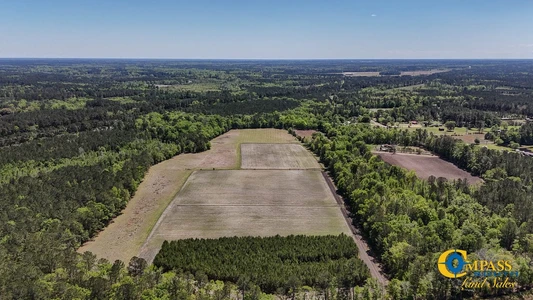

11/11/2025
$725,000
99 ac.
ACTIVE
Colleton County - Walterboro, SC
Fender Farm Colleton County, SC +/- 99 Acres $725,000 or $7,324 per Acre PRIME HUNTING AND FARMING LAND Discover the potential of Fender Farm: +/- 99 acres of land for sale just 15 minutes from Walterboro, SC. With +/- 30 acres of tillable farmland, creek frontage, and abundant wildlife, it's perfect for hunting or farming. Conveniently located off of the McCleod Road Exit on I-95, this land combines opportunity and accessibility. Prime Location Just 15 minutes from Walterboro, SC, and an hour from Charleston, SC, this property is conveniently situated right off of the McCleod Road Exit on I-95, making it easily accessible. Versatile Land With +/- 99 acres of land, including +/- 30 acres of tillable farmland, this property is perfect for both farming and hunting, offering ample opportunities for diverse use. Natural Resources The property boasts creek frontage, plus a deep well already on site, alongside a thriving wildlife population that includes deer, turkeys, and ducks, ensuring a rich and engaging outdoor experience. Experience the serenity of country living with abundant wildlife, fertile land, and easy access to city life. Contact us today to schedule a showing with one of our agents! Contact Us More SC Land New Search MAPS Download Maps
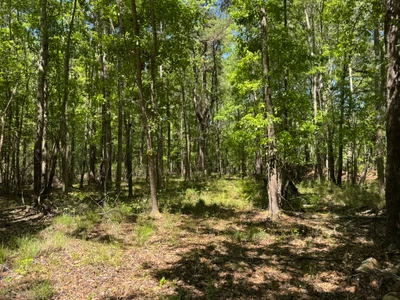

04/29/2025
$78,540
20 ac.
ACTIVE
Colleton County - Walterboro, SC
Private 19-Acre Wildlife Haven with Water Features 30 Miles from Charleston
Located just 30 miles from Charleston, this 19-acre property offers the perfect blend of privacy, natural beauty, and ecological diversity. Nestled along a quiet dirt road, it provides a peaceful, secluded setting ideal for a homestead, recreational retreat, or conservation-minded ownership.
The land is graced by the Shereau Branch, an ecologically significant stream that meanders through the property, enhancing the landscape with rich biodiversity and natural wetlands. This branch creates ideal conditions for waterfowl habitat, supports a wide range of native species, and adds a serene water element to the land.
A healthy mix of natural pine and hardwood timber spans the property, offering long-term value and a classic Lowcountry woodland feel. Abundant whitetail deer and other native wildlife frequent the area, making it a dream setting for hunters, nature lovers, or those seeking quiet immersion in the outdoors.
Whether you're envisioning a private getaway, a wildlife sanctuary, or a legacy property close to Charleston, this tract is a rare opportunity to own unspoiled acreage with meaningful ecological value and outstanding privacy.
Note: This offering is for a 19-acre division of the property that will require being surveyed off the "mother" tract. Please contact the agent for details and specifics.
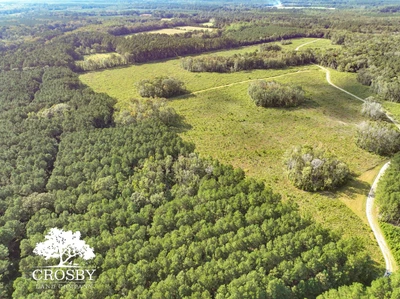

10/02/2025
$1,998,024
357 ac.
ACTIVE
Colleton County - TBD Mewville Road, Yemassee, SC
The Marvin Farm is located near the community of Hendersonville, SC, and in the heart of the ACE Basin of Colleton County. This is a uniquely diverse property offering mature hardwood bottomland that borders a bold freshwater stream, as well as a multi-age class pine forest. The hardwood forest is estimated to be over 80 years old and comprises approximately 22% of the total acreage.
This area offers a rich and diverse habitat, with mast-producing trees supporting a variety of wildlife, including an abundance of turkeys and a high-quality deer herd. The upland region is equally diverse, with varying age classes of pine plantations. The newly reforested acreage consists of 3-year-old pine plantations and some older stands that are approaching sawtimber size and form. These younger stands can provide excellent bedding and cover for deer, while the older stands can be commercially thinned to enhance upland game habitat. Located throughout the property are several established food plots and well-positioned shooting lanes. The property is easily accessible, with an improved road system, some of which has been conditioned with gravel for year-round accessibility.
This is a unique opportunity to acquire a well-appointed property in a region where land availability is scarce.
PROPERTY FEATURES:
Diverse Habitat
Freshwater Creek
Established Food Plots
Extensive Road System with Drainage
Excellent Neighboring Property Owners
*Current timber stand data is available for download in the property brochure*


11/24/2024
$1,849,990
111 ac.
ACTIVE
Colleton County - US Hwy 17A, Lot#WP001, Walterboro, SC
Nestled just outside the charming city limits of Walterboro, SC, this impressive 111 +/- acre timber property offers a unique blend of natural beauty and prime location. Situated just four minutes from both Interstate 95 and the historic downtown area, this parcel is both secluded and accessible. With mature, select-cut timber and a rich understory, the property exudes the classic Lowcountry landscape, perfect for those seeking privacy, nature, and investment opportunities. The land boasts dual road frontages on Penial Rd and US Highway 17A, ensuring convenient access and potential for future development. City water and electricity are already available, adding a layer of practicality to this otherwise rural gem. Outdoor enthusiasts will revel in the property's diverse offerings. A small, dug-out pond lies within the tract, providing potential for duck hunting or could be enhanced to serve as a picturesque water feature. Whitetail deer roam freely throughout, making this an ideal location for avid hunters or nature observers. Just a stone's throw away from Dog Hills Country Club and Golf Course, the property seamlessly blends the tranquility of a wooded retreat with the allure of nearby recreational amenities. The possibilities for this land are as vast as its acreage, whether it be crafting a dream home surrounded by timberland or curating a hunting haven. For those with an eye on future prospects, the property's proximity to Charleston County's expanding development makes it a strategic consideration for real estate investors. Given the region's growth, this substantial parcel could be transformed for residential or mixed-use purposes. Offering the perfect balance of seclusion, convenience, and opportunity, this timber property represents a rare find in the Walterboro area. The property is being sold "as is," inviting you to envision and create the future of this remarkable piece of the Lowcountry.
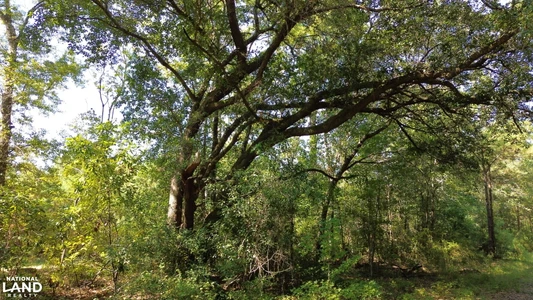

09/08/2025
$1,200,000
410 ac.
ACTIVE
Colleton County - 0 Lowcountry Highway, Ruffin, SC
This 410 +/- acre property offers a great opportunity to own a large recreational and investment tract in a prime location of Colleton County. Situated along the Little Salkehatchie River, the land provides excellent fishing opportunities and serves as a natural travel corridor for abundant wildlife, making it ideal for hunting and outdoor recreation.
The property features 277 +/- acres of clear-cut cypress bottomland, creating diverse habitat and future timber potential, along with 133 +/- acres of upland. Within the upland acreage, 60 acres are planted pines approximately 10 years old, offering both future income and cover for wildlife. A well-established trail system runs throughout the property, providing easy access to different sections of the land, food plot areas, and river frontage.
Conveniently located just 10 minutes from I-95 and less than an hour and a half from Charleston, this tract combines privacy and seclusion with excellent accessibility. Whether you're looking for a recreational retreat, timber investment, or a combination of both, this property checks all the boxes.
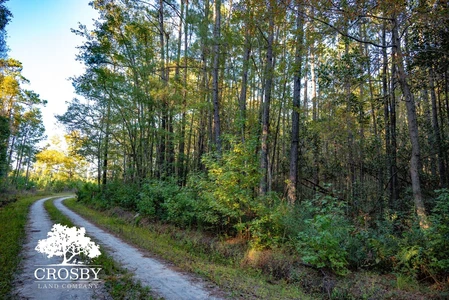

11/13/2025
$186,000
15.5 ac.
ACTIVE
Colleton County - TBD Lemon Road, Walterboro, SC
Located near the City of Walterboro, this property presents a rare opportunity to purchase 15 contiguous acres with a wealth of possibilities. The southern boundary adjoins the private Sweetbriar community, offering approximately 950 feet of shared boundary that may provide an excellent opportunity for expansion of that development.
The western boundary fronts Lemon Road, extending roughly 320 feet across this county-maintained road. The landscape is entirely wooded, featuring a heavy stand of chip-n-saw and sawtimber-sized trees, creating a blank canvas for the next owner with endless potential.
This property could easily serve as a weekend retreat for outdoor enthusiasts, with abundant recreational opportunities such as whitetail deer and turkey hunting, ATV trail riding, and more.
PROPERTY FEATURES:
Revenue Stream
Proximity to Walterboro
Entirely Wooded with Marketable Timber
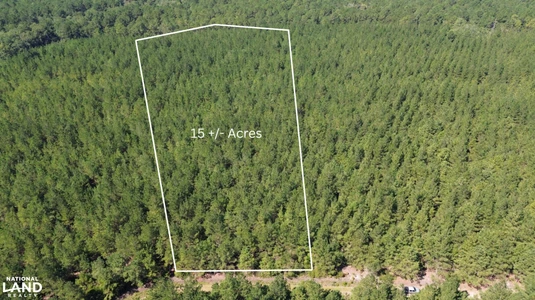

10/31/2025
$225,000
15 ac.
ACTIVE
Colleton County - 15 Red Oak Rd, Cottageville, SC
This 15-acre parcel will be surveyed out of a larger timber tract, offering a rare opportunity to own your own private piece of the Lowcountry. Tucked away off Red Oak Road, the property provides a quiet, secluded setting with the flexibility to create a residential homesite, hunting retreat, or recreational getaway. Conveniently located, the land is just 30 minutes from Summerville and only an hour from Charleston, giving you easy access to shopping, dining, and coastal attractions while still enjoying the peace and privacy of the country. Whether you're looking for a future homestead or a weekend escape, this property offers the space and natural surroundings to make it your own.
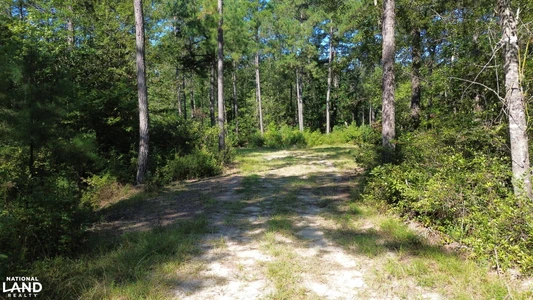

09/22/2025
$786,000
131 ac.
ACTIVE
Colleton County - 0 Lowcountry HWY, Ruffin, SC
131 +/- acres located on Lowcountry Highway in Ruffin, near Sniders Crossroads. The property is mostly wooded with a trail system throughout, making it ideal for hunting, recreation, or simply enjoying the outdoors. Approximately 60 acres were planted in pines in 2017, providing future timber value and diverse habitat for wildlife. Conveniently situated just 10 minutes from I-95 and only an hour and a half from Charleston, this tract combines rural privacy with easy access to major corridors. Whether you're looking for a recreational retreat or a long-term investment, this property is a rare find in the Lowcountry.
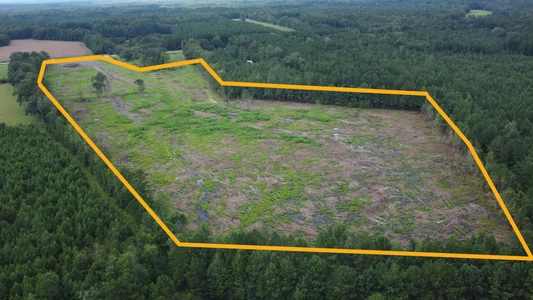

08/19/2025
$129,900
24 ac.
ACTIVE
Colleton County - Ruffin, SC
Prime 24-Acre Cleared Tract with Highway 21 frontage in Ruffin, SC
Discover an exceptional opportunity to own 24 acres of cleared land in the heart of Colleton County. Strategically positioned along Lowcountry Highway (U.S. Hwy 21), this is ideal for residential, or agricultural use.
Key Features:
Size & Topography: 20 acres of cleared land, providing a blank canvas for various possibilities.
Highway Access: Ingress/egress to U.S. Hwy 21 (fee simple or easement TBD) providing connectivity to nearby towns and cities, including Walterboro, Charleston, and Savannah.
Utilities: Power at HWY 21, city water available.
Zoning & Land Use: Tract supports a range of uses.
Location Highlights:
Nestled in the tranquil community of Ruffin, this property offers the serenity of rural living while maintaining convenient access to amenities. Close to i-95.
THIS IS AN OFFER TO DIVIDE 24 ACRES FROM THE MOTHER TRACT. PURCHASER, AT ITS EXPENSE, WILL BE RESPONSIBLE FOR THE NEW SURVEY.


1
2
3












